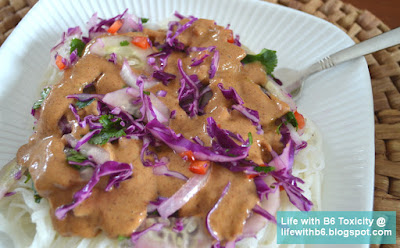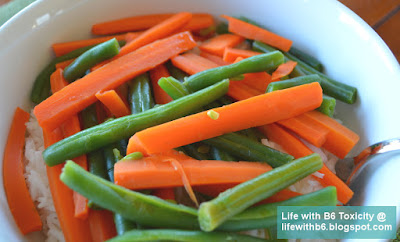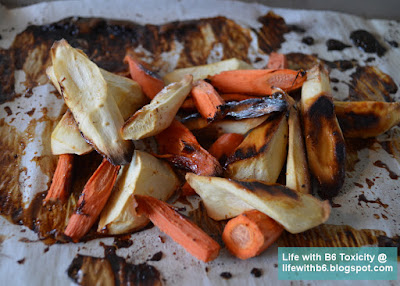One of the struggles of dealing with B6 toxicity is
avoiding vitamin deficiencies. Unfortunately, when you take B6 out of your diet, you inadvertently take out a lot of other things too. Over the past few weeks, I've had to
closely monitor my diet and make adjustments in
order to cover all the bases.
The biggest trouble-spots for me have been
calcium, magnesium, potassium, and niacin. Thankfully, I've found good solutions for most of these. For calcium, I drink soy milk. For potassium, I eat dried apricots. And for niacin,
I eat peanut butter (1-4 tablespoons a day).
Yes, these things aren't exactly low
in B6, but I make sure to spread them out over the day so my body
has time to flush it out.
The best way to prevent a vitamin deficiency is to monitor your nutrient intake. You can do this with several free online tools -- just do a search for diet trackers. You will have to log everything you eat, which is time-consuming, but if you have B6 toxicity, it's worth it. A few times now, I have developed the beginnings of vitamin deficiencies, and if I hadn't been expecting such a possibility, the symptoms might have progressed much further than they did. Since I started tracking my diet, I've felt much more secure and less anxious overall. Knowing I'm not vitamin deficient is one less thing to worry about.






